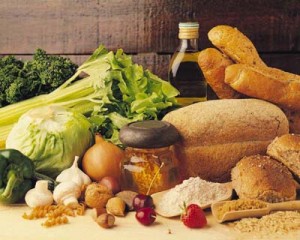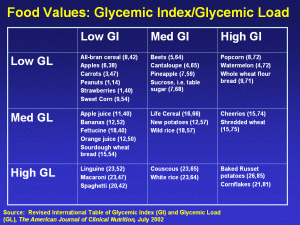I recently composed an article with all the information you need to know about protein. As we enter the most popular season for dieting, I wanted to arm you with the good side and bad side of carbs, before you fall into one of those low-carb fad diets and refuse to ever eat bread again! You might be surprised to learn that there are a lot of healthy benefits to eating the right kind of carbs.
- When you eat a carbohydrate, your body breaks it down into a simpler form known as glucose.
- Glucose (for immediate energy) and its storage form glycogen (reserve energy) provide about half of all the energy muscles and other body tissues use (the brain depends 100% on glucose for its energy). The other half of the body’s energy comes from mostly fat. We now know that carbohydrates aren’t all good or all bad. Some promote health while others, when eaten often and in large quantities, increase the risk for diabetes and heart disease.
Sources of Carbohydrates
- Carbohydrates are found in a wide variety of foods—bread, beans, milk, popcorn, potatoes, cookies, spaghetti, soft drinks, cherry pie, milk, fruit, starchy veggies, and legumes.
- They also come in a variety of forms, most common and abundant forms are sugars, fibers, and starches.
- Carbohydrates were once grouped into two main categories:
- Simple carbohydrates included sugars such as fruit sugar (fructose), corn or grape sugar (dextrose or glucose), and table sugar (sucrose).
- Complex carbohydrates included everything made of three or more linked sugars. Complex carbohydrates were thought to be the healthiest to eat, while simple carbohydrates weren’t so great.
Common Misconception of Carbohydrates
- Many people mistakenly think of carbs as “fattening” and avoid them when trying to lose weight. Such a strategy may be helpful if the carbohydrates are simple sugars (soda, candy, etc.), but it is counterproductive if the carbs are complex carbohydrates (whole grains, legumes, etc.).
The Glycemic Response and the Glycemic Index
- Glycemic response, which is how quickly glucose is absorbed after a person eats, indicates how high the blood glucose rises, and how quickly it returns to normal. The Glycemic Index aims to classify carbohydrates based on how quickly and how high they boost blood sugar compared to pure glucose.
- Slow absorption is desirable, a modest rise in blood glucose, and a smooth return to normal (low glycemic response).
- Fast absorption is less desirable, a surge in blood glucose, and an overreaction that plunges glucose below normal (high glycemic response).
- Different foods have different effects on blood glucose.
- Foods with a high glycemic index, like white bread, cause rapid spikes in blood sugar. Low glycemic foods, like whole oats, are digested more slowly, causing a lower and gentler change in blood sugar.
Which Carbs Should You Eat?
- Choose whole grains and whole-wheat options
- Start your day off with whole grains. Hot cereal fan? Try old-fashioned or steel-cut oats. Like cold cereals more? Look for one that lists whole wheat, whole oats, or other whole grain first on the ingredient list.
- Use whole grain breads for lunch or snacks.
- Try brown rice or even “newer” grains like bulgur, wheat berries, millet, or hulled barley with your dinner.
- Pick up some whole wheat pasta. If the whole grain products are too chewy for you, look for those that are made with half whole-wheat flour and half white flour.
- Eat beans. Beans are an excellent source of slowly digested carbohydrates as well as a great source of protein.
Check the label to make sure that whole wheat or another whole grain is the first ingredient listed.



Thanks for the sensible advice on carbohydrates. I visit a lot of low-carb websites and just don’t believe everyone should avoid carbs like the plague.
The glycemic index is a little less helpful to me. The index was designed to express the blood glucose response to foods eaten alone, such as slice of white bread. When you eat that slice with eggs and bacon, the response is much different.
-Steve
I weighed in at 233 (my MAX!) last July with an allergic reaction to another blood pressure med.
Since I am running out of options on bp meds I can take I commented to the doctor that I probably wouldn’t NEED them if I dropped 60 pounds. So here I go!
I am currently (9 months later) down to 173 and dropping. Working out every day has helped, but I can say without a doubt that keeping all carbs down BELOW 40 grams a day is my key to weight loss. If I binge and go over that the exercise just keeps my weight level. So I watch what I eat and exercise!
Sixty pounds is a start, but there is still a lot of flab left from four kids (1 a C-section) and years of 1-meal-a-day dieting. Forty pounds to go with exercise and sensible eating is my key…
A low carb diet is not a “fad”diet. Read the book and get your facts straight first before you print mistruths.